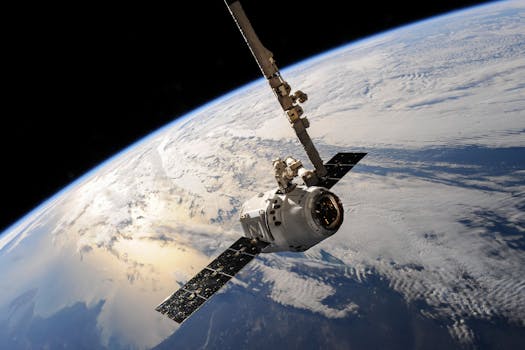Future of Satellites: Revolutionizing Global Connectivity

Future of Satellites: Revolutionizing Global Connectivity
The future of satellites is revolutionizing the way we communicate, navigate, and understand our planet. With advancements in space technology, satellites are becoming more efficient, cost-effective, and accessible, enabling a wide range of applications and services. The focus keyword Future of Satellites is a crucial aspect of this revolution, as it encompasses the development and launch of new satellite technologies, services, and applications that are transforming the global landscape.
Satellites have been a vital part of modern life for decades, providing essential services such as television broadcasting, telecommunications, navigation, and weather forecasting. However, the future of satellites is not just about maintaining these existing services, but about expanding and improving them, as well as enabling new applications and industries. The development of new satellite technologies, such as small satellites, satellite constellations, and advanced propulsion systems, is driving this revolution.
Advancements in Satellite Technology
One of the key drivers of the future of satellites is the advancement in satellite technology. New materials, designs, and manufacturing techniques are enabling the development of smaller, lighter, and more efficient satellites. For example, small satellites, also known as CubeSats, are being used for a wide range of applications, including Earth observation, communications, and scientific research. These small satellites are often launched in large numbers, creating constellations that can provide global coverage and enable new services such as satellite-based internet and navigation.
Satellite constellations are another area of advancement in satellite technology. These constellations consist of multiple satellites working together to provide a specific service or application. For example, the Iridium NEXT constellation provides global satellite-based communications, while the OneWeb constellation aims to provide high-speed internet access to remote and underserved communities. The development of advanced propulsion systems, such as electric propulsion and advanced ion engines, is also enabling satellites to operate more efficiently and effectively.
Applications and Services
The future of satellites is enabling a wide range of applications and services, from satellite-based internet and navigation to Earth observation and scientific research. Satellite-based internet, for example, is being used to provide high-speed internet access to remote and underserved communities, bridging the digital divide and enabling new economic opportunities. Satellite navigation, such as GPS and Galileo, is being used for a wide range of applications, including aviation, maritime, and land transportation.
Earth observation satellites are being used to monitor the environment, track climate change, and predict natural disasters. These satellites are equipped with advanced sensors and instruments that can collect data on the Earth’s surface and atmosphere, enabling scientists and policymakers to make informed decisions about the management of natural resources and the mitigation of environmental risks. Scientific research satellites, such as the Hubble Space Telescope, are being used to study the universe, understand the formation of stars and galaxies, and search for signs of life beyond Earth.
Challenges and Opportunities
Despite the many advantages and opportunities offered by the future of satellites, there are also challenges and risks that need to be addressed. One of the key challenges is the increasing amount of space debris in Earth’s orbit, which can pose a risk to operational satellites and other spacecraft. The development of new technologies and strategies for removing space debris, such as satellite servicing and debris removal, is critical to ensuring the long-term sustainability of space operations.
Another challenge is the need for international cooperation and regulation in the use of satellites. As the number of satellites in orbit increases, there is a growing need for coordinated management of space traffic, to prevent collisions and ensure the safe operation of satellites. The development of international standards and regulations, such as those being developed by the International Telecommunication Union (ITU), is critical to ensuring the long-term sustainability of the satellite industry.



